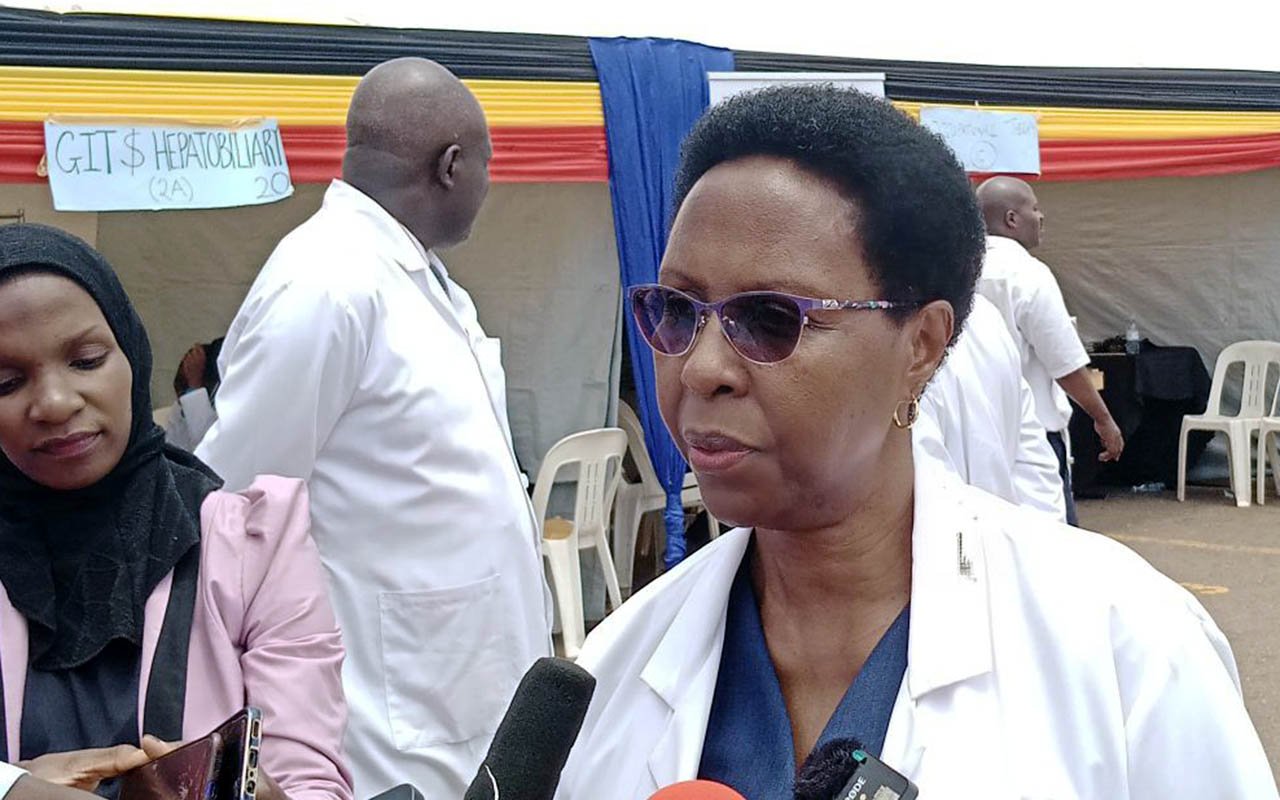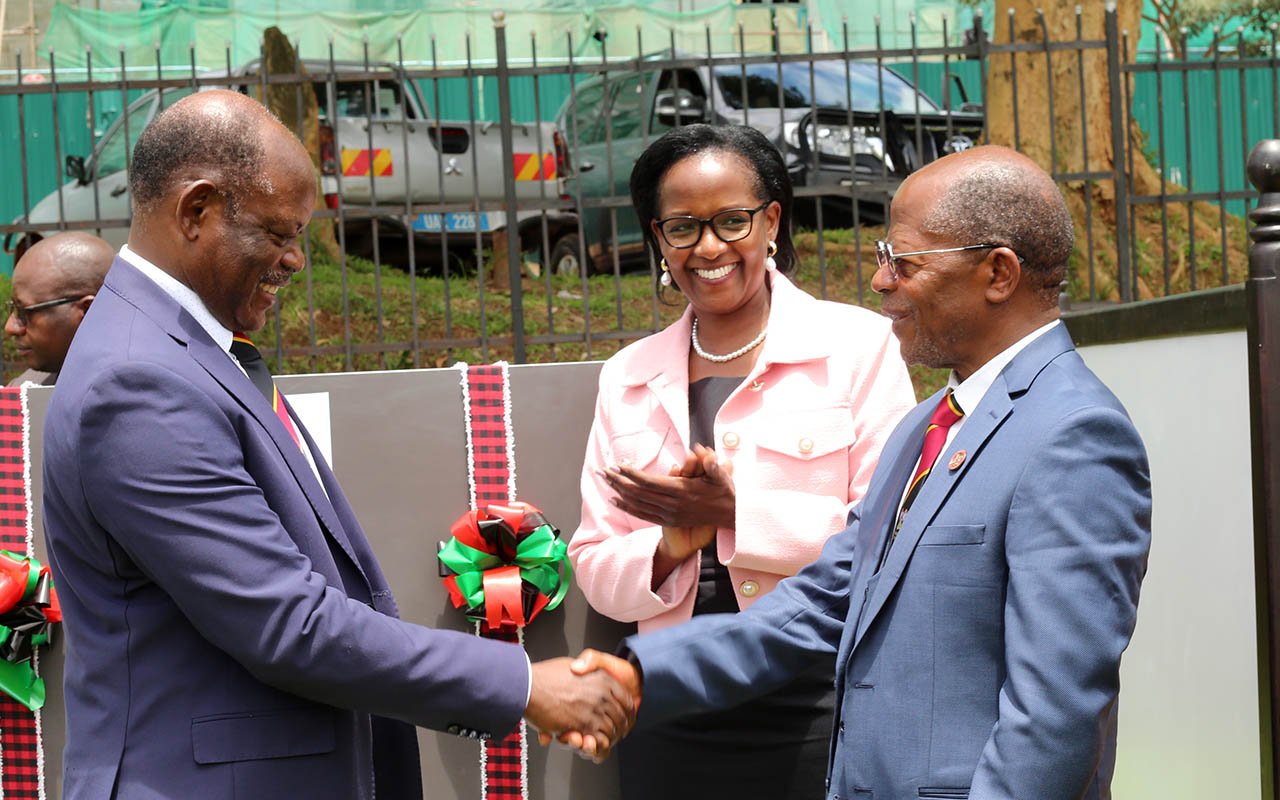Walk-to-Work: Eye witnesses narrate how chaos unfolded

Riots. Young men burn tyres a during the 2011 Walk-to-Work protests. FILE PHOTOS
What you need to know:
- Not spared. Despite being on duty to either cover events as they unfold or volunteering to rescue the attacked, they were neither spared journalists, volunteers and the common man all had the taste of teargas with other being shot at or beaten. In this second part of the series, Gillian Nantume brings you experiences of eye witnesses of the 2011 protests.
On April 14, 2011, as Dr Besigye and his aides were leaving his home, a former Uganda Red Cross Society (URCS) volunteer, who preferred anonymity, says her colleagues received a call from an Opposition politician, telling them to get ready for action.
AFP freelance photographer Isaac Kasamani, then a Daily Monitor photojournalist, says Dr Besigye was stopped by anti-riot police a few metres from his home, but he ignored them and continued towards the trading centre.
“At Kasangati, police confronted him again and fired teargas and rubber bullets into the air. In protest, Besigye and his aides sat in a roadside trench. I was jumping in and out of the trench, taking pictures, as police and demonstrators clashed.”
Mr Michael Ssengendo, a URCS volunteer, witnessed the situation unfolding.
“A man, who was trying to calm the rioters, was stoned. Some tried to run him over with motorcycles but failed. A police ambulance was parked nearby but the nurses had fled. I begged the rioters to let me give the man first aid.”
At Kasangati Health Centre, a pregnant woman had been tear-gassed. Mr Ssengendo and his colleagues put her and two policemen – one shot and the other with a broken leg into an ambulance. The woman delivered her baby en-route to Mulago Hospital.
Dr Besigye left the trench and sat under a tree. “He got up and a crowd surrounded him,” Kasamani says, adding, “They began walking towards Kampala, but at a school (Kasangati Muslim Primary School) they met military police. We (journalists) immediately left the crowd and stood behind the soldiers.”
A policeman spoke on a loud speaker warning people not to cross the line in the road. The rioters crossed the line and the soldiers began shooting. Everyone scattered, with the soldiers in hot pursuit. “The journalists lay down flat on the road and when we thought things had calmed down, we went to Besigye, who was at the roadside.”
When Ssengendo returned from Mulago, the fracas had already begun. “I saw a soldier brutally beating an eight-year-old boy. When he finished, I went to the boy. The soldier thought I wanted to attack him. Even though I was wearing a URCS reflector jacket, he shot at me. Someone pushed me down and the bullet hit a man behind me in the chest. He did not die, so I put him and the child in the ambulance. Then, I noticed soldiers were dragging Dr Besigye on the ground. Blood flowing from his hand.”
Dr Besigye’s right thumb had almost been snapped off by a rubber bullet. Ssengendo joined the journalists who were pleading with the soldiers to let Besigye receive medical aid. “They listened to me and we put him in the ambulance. With seven patients now, we drove towards Mulago.”
At Luteete, the ambulance was stopped by an angry mob brandishing stones, sticks, and pangas. They demanded to know who was in the ambulance. “While my colleague, Ibra Ssenyonga, remained at the wheel, I got out and told them their Colonel was on board,” Ssengendo say, continuing, “They instructed me to open the doors and when they saw him, they let us go. At Mpererwe-Muvule, we met a similar roadblock.”
In the ambulance, Dr Besigye told Ssengendo he would not be safe in Mulago hospital and if anything happened to him, the volunteer would be answerable.
“He said I was risking my own life by taking him to Mulago. At the hospital, security operatives ordered me to open the ambulance. I refused.”
Ssengendo explained that the law barred him from handing the injured to the military. Angry, the soldiers beat him. When Hon Odonga Otto arrived a scuffle broke out and the operatives tear-gassed the hospital.
Dr Besigye instructed the volunteers to take him to Kampala Hospital. As the ambulance exited Mulago, it was followed by a convoy of mambas. “I told my colleague that we should hand over the man (Besigye) immediately,” Ssengendo says, adding, “We called Kampala Hospital and they agreed to receive Dr Besigye but told us to block the mambas. We drove the ambulance right up to the hospital doorstep and made Dr Besigye sign a transfer form.”
The volunteers drove back to Kasangati where they found that Kasangati Muslim Primary school had been teargased and 17 pupils needed immediate attention.
Across town, in Najjanankumbi, the news of Besigye’s shooting sparked immediate civil unrest in which a seven-month pregnant woman was shot in the stomach. Miraculously, she and her unborn baby survived.
After a few hours, Dr Besigye was discharged and he resumed his walk. He was intercepted at Wampewo. Wampewo Ntakke Secondary School was tear-gassed during the scuffle and URCS volunteers dispatched 78 students to Mulago Hospital. Around Kampala, 220 people were arrested and charged with demonstrating.
Riots in Gulu
On the same day, in Gulu Town, the district police commander, Moses Muluya, intercepted Norbert Mao as he was leaving his home in Pece Division and forced him into a police car.
Angry protesters tore down and burnt President Museveni’s campaign posters and lit tyres on the Kampala-Gulu highway. By evening, soldiers from the 4th Infantry Division Barracks had taken over the streets. Dan Musa Wasaga, a 27-year-old vegetable vendor in Layibi Market, was shot dead at UMEME’s sub-station in Layibi Division. Sulaiman Wasaga, chairman of the Gishu community in Gulu Town, was the chairman of Layibi market in 2011. .
“My son was going to travel to Mbale the next day (April 15) to buy cabbages. I gave him Shs4m and went into Gulu town to participate in a pool tournament. When the protests began, I walked home. My son called to tell me the situation was bad. I advised him to remain at the stall. At about 6pm, he called again, and I told him if the riots had stopped he could lock up.”
The next morning, when Wasaga arrived at his stall, he was shocked by what his worker told him. “They had locked up the stall and decided to walk into Gulu town. At the sub-station, they met three red tops (soldiers).”
The soldiers asked the duo where they were coming from. As they replied, one soldier cocked his gun. “In fear, they turned, to run. My son was shot through the back. The soldiers robbed his body of Shs4.7m and a mobile phone. He had two wives and five children.”
A few metres away, Charles Odur, a 32 year-old welder, was working in his workshop on Oweka Road, in Layibi. His best friend and colleague, Patrick Oryem, recalls, “It was around 7.30pm. People were running into Layibi and there was a lot of teargas and bullets. I was in the workshop with Odur when we realised the soldiers were coming towards us. We run into a temporary building and closed the door.”
There were four men inside the temporary building. Two bullets hit the iron sheets that served as a wall. “Odur cried out, ‘Omera an dong gi cela, gi cela, gi cela oo dong!’ (My brother, they have shot me, they have shot me, they have shot me now!) He died after a few seconds.”
Oryem run outside, and together with the landlord’s wife, made an alarm. “A group of soldiers came to find out what was happening. We told them they had shot our person. They just walked away. Policemen arrived on a truck and ordered us to load the body. We were taken to Gulu Central Police Station to make a statement.”
Odur was a nephew of the Retired Bishop Nelson Onono-Onweng. President Museveni called the bishop to console him over his loss. Police contributed 50kgs of posho, 50kgs of beans, cooking oil, and a coffin to the burial expenses.
Odur was buried in Lukodi village, 17km north of Gulu town. President Museveni’s letter of condolence was read by (then) Minister for the Presidency, Beatrice Wabudeya. He sent Shs5m for burial expenses.
Bishop Onono-Onweng says, “Police and UPDF gave me Shs2.5m and Shs400,000, respectively, for burial expenses. I asked Wabudeya to request the President to help complete my nephew’s house in Cubu and pay his children’s school fees. I never heard from Wabudeya again.”
Odur’s widow, Pasca Apenyo, and Oryem never saw the money the police and UPDF contributed.
A three-day curfew was upheld in Layibi. According to the Human Rights Watch (HRW), two women reported to the police that they had been raped by soldiers. The 4th Division spokesman informed HRW that these allegations were “simply the people wanting to abuse the army.”
Hunting, defeating, and crushing
As Walk-to-Work gained momentum, President Museveni did not mince his words. The Washington Times, in an online story titled, Ugandan protesters ordered shot for walking to work, quoted Museveni as saying on Saturday April 15, 2011, “There will be no demonstrations in Kampala. If Besigye wants to walk for exercise, let him do it somewhere else…What I call on the public to do is to use fuel sparingly. Don’t drive to bars.” The president did not make it clear whether the public should instead walk to bars.
This newspaper carried a story on April 15, 2011 saying that government had banned live broadcasts around the Walk-to-Work campaign and that Uganda Communications Commission (UCC) had ordered telecom companies to block social media for 24 hours.
On April 18, 2011, Opposition leaders resumed Walk-to-Work. That day, Ssengendo performed his most heroic act. “When I received a call to duty, I locked my seven-year-old twins in the house, leaving the windows open. There had been an accident near Kasangati Police Station. People were stoning the taxi, accusing the passengers of being driven, when their man (Besigye) was walking.”
As they were transferring the injured to the ambulance, Ssengendo received a call that two teargas canisters had been thrown into his house. His children were suffocating. “I dropped everything to run home, but as I was running though the police quarters, I came across a family that had been teargased. Bullets were flying all over so I crawled to them. They had forgotten a two-week-old baby in their uniport.”
Inside the uniport, Ssengendo found baby Emmanuel Osuje forming at the mouth and turning blue. A teargas canister was in the baby’s cot, emitting fumes.
“I lost consciousness. When I came to, I carried the baby outside, and collapsed. When I came [back], the parents had wrapped him in a wet towel. I gave the baby mouth-to-mouth resuscitation and chest compressions.”
Police patrol car drivers refused to transport the baby to a clinic, fearing that they would be hit by stray bullets. Ssengendo carried the baby and crawled to a safe distance, and then, run. A police vehicle eventually caught up with him and the baby was taken to Mulago. From there he went to save other lives, forgetting his children. He learnt the next day that a Good Samaritan had rescued his children and taken them to Mulago.
That day, Kasangati Court Grade One Magistrate, James Eremye Mawanda refused to deny Besigye bail as the State had requested.




